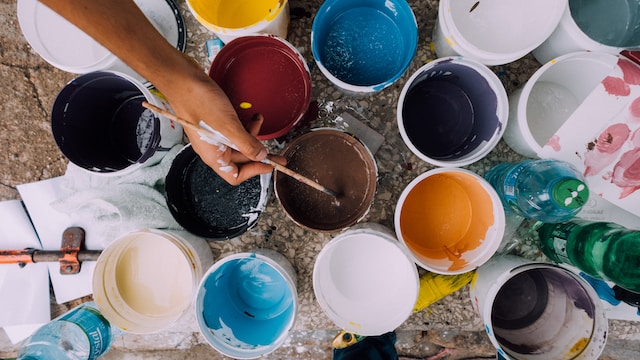Introduction: In a world filled with constant distractions and a never-ending stream of information, finding moments of peace and tranquility can be challenging. However, many individuals have discovered solace and calmness through the practice of painting and drawing. In this article, we delve into the world of art therapy and explore how the act of putting brush to canvas or pencil to paper can quiet a busy mind and promote mindfulness.
Body:
- The Therapeutic Nature of Art: Art has long been recognized as a powerful form of self-expression and creativity. Beyond its aesthetic value, engaging in artistic activities has therapeutic benefits for mental well-being. Painting and drawing provide an outlet for emotional expression, stress reduction, and self-reflection.
- Mindfulness in Art: a. Engaging the Senses: When we immerse ourselves in the process of creating art, we become more attuned to our senses. The feel of the paintbrush or the texture of the paper, the colors and shapes that emerge, all contribute to a heightened sense of awareness and presence in the moment. b. Focus and Concentration: Art requires concentration and focus, redirecting our attention away from racing thoughts and worries. By focusing on the brushstrokes, the blending of colors, or the intricate details, we enter a state of flow, where the mind becomes fully absorbed in the creative process. c. Non-judgmental Acceptance: Art encourages non-judgmental acceptance of one’s creations. It allows for self-expression without the pressure of achieving perfection. Through art, individuals can embrace imperfections and let go of self-criticism, fostering self-compassion and acceptance.
- Expressive Freedom: Art provides a platform for individuals to express emotions that may be difficult to articulate in words. It allows for the release of pent-up emotions, offering a cathartic experience. Painting and drawing can serve as a means of processing complex emotions, promoting emotional well-being and providing a sense of relief.
- Stress Reduction and Relaxation: Engaging in artistic activities has been found to reduce stress levels and promote relaxation. The rhythmic and repetitive movements involved in painting or drawing can activate the body’s relaxation response, leading to a decrease in heart rate and blood pressure. This meditative aspect of art can help individuals unwind and find inner calm.
- Art Therapy in Practice: Art therapy is a recognized form of psychotherapy that incorporates artistic processes into the therapeutic journey. Trained art therapists facilitate sessions where individuals explore their thoughts and emotions through art-making. Art therapy is utilized in various settings, including hospitals, mental health clinics, schools, and community centers, to support individuals facing a range of challenges, such as anxiety, depression, trauma, and grief.
- Accessible and Personal: One of the beauties of art therapy is its accessibility. Anyone can engage in artistic activities regardless of skill level or artistic background. The focus is not on the final product but on the process and the individual’s personal experience. From doodling in a sketchbook to exploring different painting techniques, the act of creating art can be tailored to individual preferences and needs.
Conclusion: In a fast-paced world that often leaves us feeling overwhelmed and disconnected, the mindful brushstroke offers a sanctuary for the mind. Painting and drawing provide an avenue for self-expression, stress reduction, and mindfulness. The therapeutic benefits of art allow individuals to quiet a busy mind, explore emotions, and find solace in the creative process. As more people recognize the power of art therapy, it is increasingly being integrated into mental health practices, offering a valuable tool for promoting well-being and nurturing the soul.




